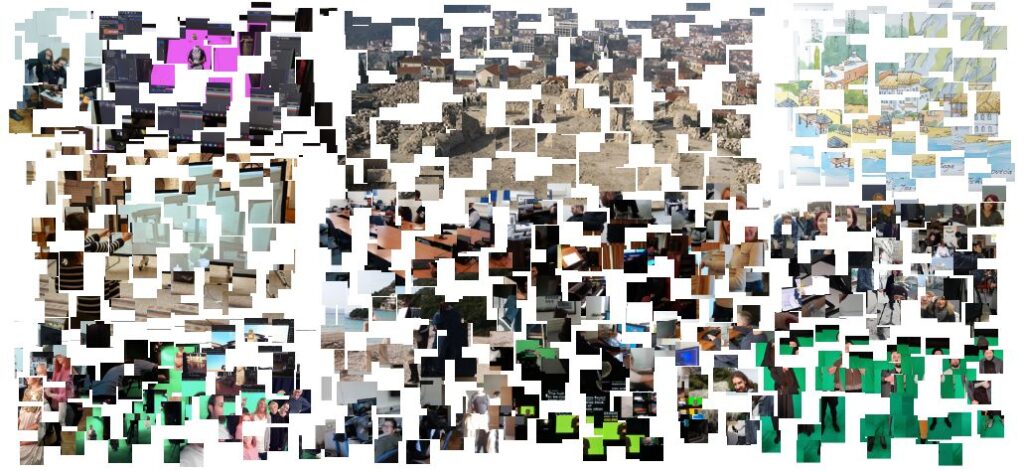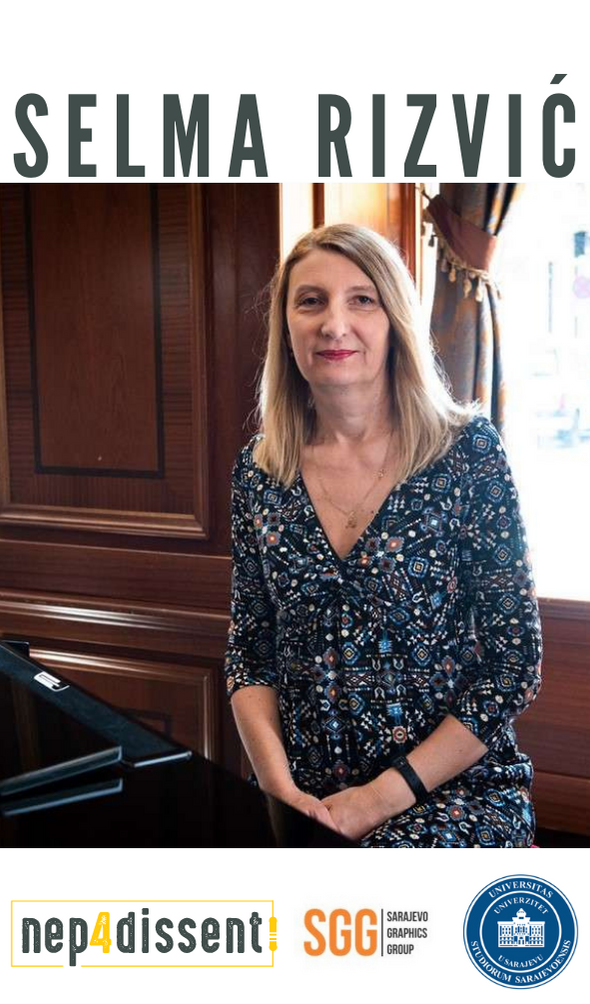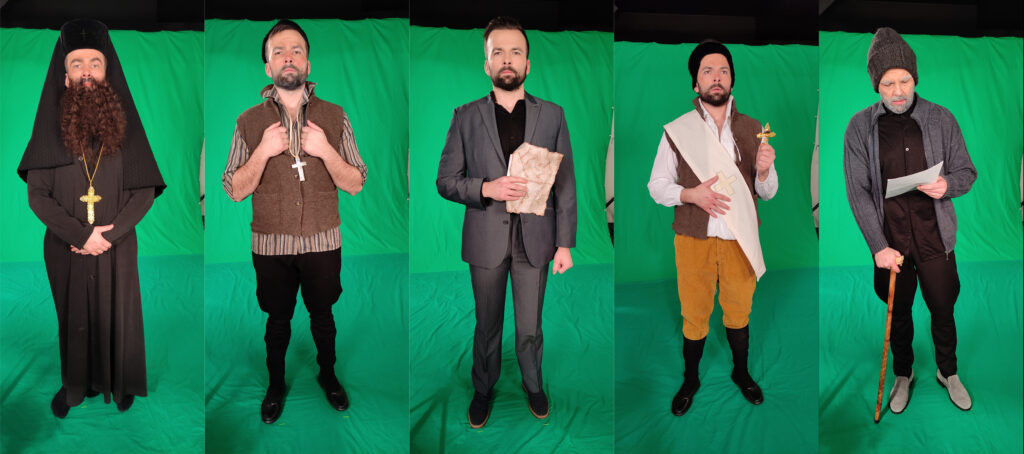Computer Graphics from Sarajevo: Interview with Selma Rizvić
The interview was conducted by Sanita Reinsone in written form from 24 October to 29 November 2021.
06/01/2022

In 2004, the Laboratory for Computer Graphics or the Sarajevo Graphics Group has been established. This coincides with the time when such video service providers as YouTube and Vimeo is established opening up new horizons of video hosting and sharing, and eventually also creating. How did the idea for the Sarajevo graphics group come about and what was its purpose?
I started teaching Computer Graphics at the Faculty of Electrical Engineering, University of Sarajevo as a Lecturer in 1998. We had just survived the siege of Sarajevo, the Faculty building remained on the territory under Serb control, not accessible to us and all our equipment was stolen and taken to Belgrade. In 2002 our dean sent me to a conference “East meets West” in Graz, Austria, to present a poster about my research. There I met Professor Alan Chalmers from Bristol University, UK, who was surprised that computer graphics exists in Bosnia and Herzegovina. I told him about our problems with funding and equipment and he kindly offered his support. We applied together to a UNESCO grant and started the first cultural heritage digitization project in Bosnia and Herzegovina – laser scanning and virtual reconstruction of a stecak from Donja Zgošća (https://youtu.be/new_xT0bQqY). That was the beginning of the Laboratory for Computer Graphics – Sarajevo Graphics Group.
How has the Laboratory evolved during these more than 20 years?
In the first years we were working mainly with our students, tasking them to create digital heritage within their lab projects. Our aim was to virtually reconstruct and present the cultural monuments that do not exist anymore, something else being built in their place, or destroyed and damaged through time. In that way, we created Virtual Sarajevo, the first digital guide through our city, consisting of digital stories, panoramic photos, video walks and 3D reconstructions. We also recreated the Isa Bey endowment complex, mentioned in the first written document about Sarajevo in 1462, today completely destroyed and forgotten. The Church of the Holy Trinity in Mostar was one of the most beautiful Orthodox churches in Bosnia and Herzegovina. During the war in the 1990s Croat military forces burned it to the ground and destroyed the remains with explosives. We created interactive 3D reconstruction with digital storytelling performed by the main priest who was inside the model talking about the history of the church and important parts of the interior.

Selma Rizvić is a Professor of Computer Graphics at the Faculty of Electrical Engineering, University of Sarajevo, Head of the Sarajevo Graphics Group laboratory. She also works as visual artist and Head of Broadcast Design Department at BH Radio Television. Her scientific interests are Computer Graphics, Computer Animation, Broadcast Graphics, Virtual Heritage, Digital Storytelling and Digital Humanities. Sarajevo Graphics Group currently work on H2020 iMARECULTURE project presenting underwater cultural heritage using digital technologies. Under Selma’s leadership the Group has created many virtual cultural heritage projects also in Bosnia and Herzegovina, most famous of them Sarajevo Survival Tools, virtual museum of Sarajevo siege.


We also digitized collections of several museums, such as the Museum of Sarajevo (Virtual Museum of BH Traditional Objects, Virtual Museum of Sarajevo Assassination) and Historical Museum where we created the exhibition about Sarajevo siege, based on the physical collection of objects that citizens of Sarajevo were creating to survive and storytelling from our experience in the siege (Sarajevo Survival Tools).
These and similar projects and publications of the research brought us the invitation to our first European project, FP7 Network of Excellence Virtual Museum Transnational Network (V-Must.net), where we finally were paid for our research and got the opportunity to collaborate with 17 major institutions from 12 countries. The project ended with a glamorous exhibition about Roman culture during the rule of Emperor Augustus, held in Rome, Alexandria, Amsterdam and Sarajevo, entitled Keys to Rome. This exhibition was connecting physical collections of selected 4 museums through digital heritage applications.
After that, we continued to work on local and international projects and publish our work at major international conferences and in journals. Our next European project was H2020 iMARECULTURE, where we were partners in recreating and virtually presenting underwater cultural heritage. Sarajevo Graphics Group was in charge of interactive digital storytelling for computer games, VR and AR applications developed within the project.
Our expertise in interactive digital storytelling and the guidelines we designed with interdisciplinary experts called Sarajevo Charter brought us invitations in more collaborations, such as two COST actions (Color and Space in Cultural Heritage and NEP4DISSENT). I became a member of the Steering Committee of the EUROGRAPHICS Workgroup on Graphics and Cultural Heritage and Ambassador and leader of the Special Interest Group “XR for digital heritage presentation” in XR4ALL, today XR4Europe.
In the last five years, we also focused on Virtual Reality video. We produced two VR movies, Nine Dissidents and Ilhamija – the first Bosnian Dissident and introduced VR videos into educational games for museums. Our application Mostar Cliff Diving VR enables the users to virtually jump from the Old Bridge in Mostar, while Battle on Nereva VR makes the museum visitors experience the most important battle in WWII in Bosnia and Herzegovina. Through our applications, one can pass through the Sarajevo War Tunnel in VR and learn about life in the prehistoric period in Crvena stijena, Montenegro.
For two years we were working on Roman Heritage in the Balkans project, where we virtually recreated cultural monuments and sites from the Roman period in Serbia, Montenegro, Bosnia and Herzegovina and Albania and presented them in VR through an actress in the role of Minerva, goddess of knowledge.





We also created several AR applications, such as Roman Heritage of Sarajevo and Sarajevo 5D, introducing digital reconstructions of cultural heritage through storytelling on mobile devices. All our applications use actors for digital narratives and make us different from other research groups who mostly use computer-generated avatars. We believe that no avatar can convey emotion in storytelling better than a real human.
In 2010 we founded an NGO called DIGI.BA, gathering our collaborators who are not from computer science, such as film and visual artists, composers, writers, archaeologists, historians, set designers, make-up artists and actors. In 2020 we celebrated 10 years of DIGI.BA through a movie we produced.
As you already mentioned, the projects of your group are carried out in highly interdisciplinary teams. How easy or difficult is it to work together with specialists from so many different fields?
The only way to create successful digital cultural heritage presentations is to involve interdisciplinary teams. There is no way that computer scientists could or should write scenarios, decide on historical information and perform any other work outside of their expertise when there are experienced professionals in other fields connected to the projects. We find the work with interdisciplinary experts very inspiring and enjoy it very much. The main condition for successful communication is mutual respect. We exchange ideas and appreciate each other’s opinions, but in the end, the final decision is up to the experts in particular fields. As the producer of our virtual heritage applications, I choose the best people available and never step in the way of their creativity.
How about people whose stories you are telling? Do they also take part in your projects? What is your experience cooperating with local communities?
By now we were mainly working on stories from the distant past. In the case of digital presentations of the Sarajevo siege and dissidents, we used testimonies from witnesses or archive materials. Wherever possible, we cooperate with people related to the event we are presenting. Our applications which recreate objects from the past are very much appreciated by people who still remember them. Sometimes they contact us and bring additional materials or photos, as well as suggestions for the new projects.
One of your team’s latest initiatives connects to the Hidden Galleries project, which was recently the subject of an interview with researcher James Kapaló. Could you tell what it will be and when it will be launched?
The Hidden Galleries physical exhibition of documents and secret police files about the underground spaces and lives of religious communities in the Soviet Union was digitized by our group and presented in desktop Virtual Reality. Based on information and archive materials provided by James and his collaborators headed by Tatiana Vagramenko, we created 5 digital stories about the destinies of orthodox believers who were exposed to extreme oppression during the Soviet era and suffered together with their families a total excommunication from society. We created this digital exhibition during the Covid 19 pandemic, to make it accessible to people through the Internet and named it Underground.
Our team created the scenarios for digital stories where the actor plays the role of a historical person and tells the viewers what happened to him inside the 3D model of the environment related to the topic of the story. The famous Bosnian actor Adnan Haskovic plays all five characters. We recorded him on the green screen and added the footage in Unity 3D software inside the virtual model of the space known from the photographs and descriptions in the secret police files. Around him, we placed the digital versions of exhibits to be explored by the viewers.
After the successful completion of these five stories, James and his team were so pleased that they decided to engage us to create three more. This time the main narrator is actress Selma Alispahic. At the moment we are in the production phase. The filming of the actress, 3D environments and music are finalized. Now the programmers need to put everything together in Virtual Reality. We plan the premiere by the end of 2021.





testing the green screen composite
Cite this interview: Selma Rizvić, “Computer Graphics from Sarajevo: Interview with Selma Rizvić,” interview by Sanita Reinsone, Blog4Dissent, January 6, 2022.
